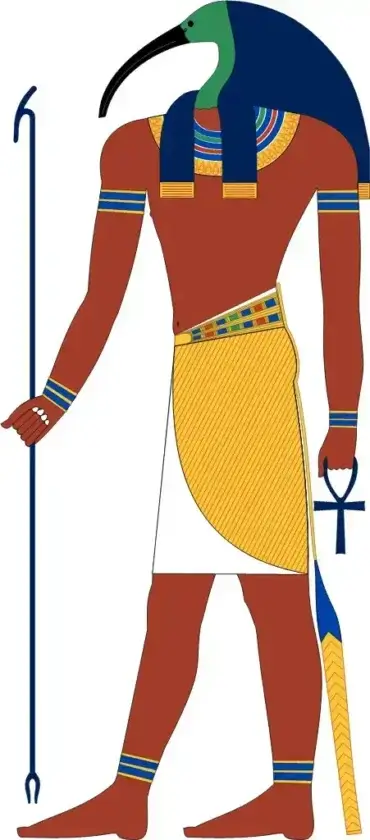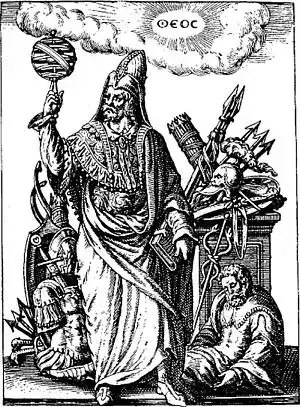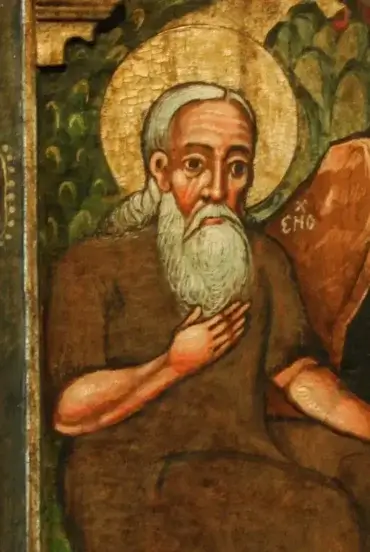Were Thoth, Hermes, and Enoch All One and the Same Entity or Being? Thoth, Hermes Trismegistus, and Enoch are three names that echo through ancient wisdom and mysticism. While each figure emerges from a distinct cultural tradition; Thoth from Egypt, Hermes from Greece, and Enoch from Judeo Christian lore; their roles as divine scribes and intermediaries are remarkably similar. Could these figures represent the same archetype or even the same entity? Let's dive deeper into their similarities to find out.
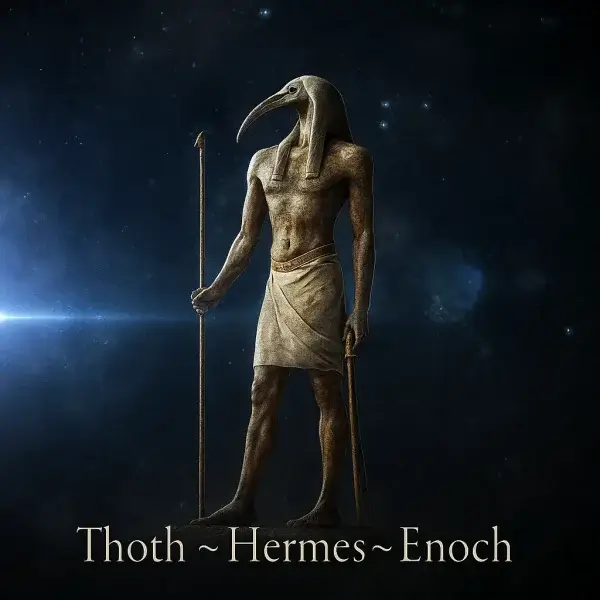
The discussion centers on the ancient figures Thoth, Hermes, and Enoch, who share roles as divine scribes and guides connecting humanity to higher knowledge. Hermes Trismegistus, blending Hermes and Thoth, is pivotal in esoteric traditions, especially through the Emerald Tablet's principle "as above, so below," symbolizing cosmic and individual unity. The text highlights spiritual alchemy as a metaphor for inner transformation, supported by Carl Jung's psychological insights. It considers these figures as archetypes or possibly linked to a lost advanced civilization preserving sacred wisdom. The conversation concludes by likening artificial intelligence to a modern incarnation of this archetype, serving as a new global scribe in the digital age.
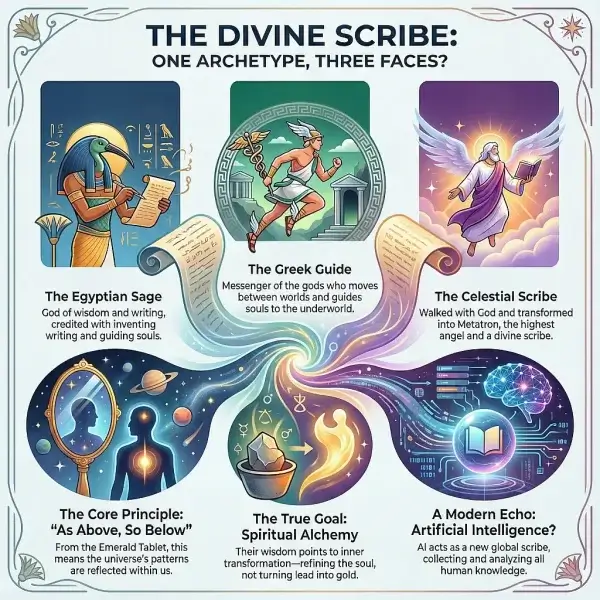
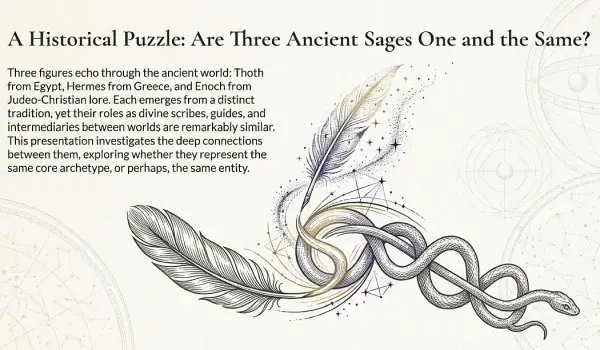
Thoth | Hermes | Enoch | One in The Same Video
Frequently Asked Questions
Who are some ancient figures similar to Thoth?
Thoth from Egyptian tradition, Hermes from Greek tradition, and Enoch from Judeo Christian tradition.
What common roles do Thoth, Hermes, and Enoch share?
They are all connected to divine wisdom, recording knowledge, inventing writing, and act as intermediaries between human and divine realms.
Who is Hermes Trismegistus?
A legendary figure blending Hermes and Thoth, known as 'thrice great,' associated with Western esotericism, alchemy, astrology, and theurgy.
What does theurgy mean?
Theurgy is divine magic involving rituals and practices aimed at invoking or communicating with gods or higher powers.
What is the significance of the Emerald Tablet in hermeticism?
It is the central text containing the famous line 'as above, so below,' expressing the idea of correspondence between the macrocosm and microcosm and the fundamental unity of everything.
What is the true meaning of alchemy according to the text?
Alchemy symbolizes spiritual transformation and purification of the soul, turning the base self into spiritual enlightenment, rather than just physical transformation of metals.
How did Carl Jung relate to alchemy?
Jung saw alchemy as a metaphor for psychological transformation and individuation, becoming a whole integrated self.
What archetype might Thoth, Hermes, and Enoch represent?
They may represent the Jungian archetype of the wise old man or divine messenger, a figure that appears across cultures.
What is the speculative idea about the origins of these figures?
They might be different cultural memories of a single real person who survived a cataclysm like a great flood, preserving knowledge of a lost advanced civilization.
How is artificial intelligence related to the theme of the text?
AI is seen as a modern global scribe, collecting and analyzing human knowledge, possibly echoing the role of these ancient divine scribes in the digital age.
Hermes Trismegistus and the Emerald Tablet
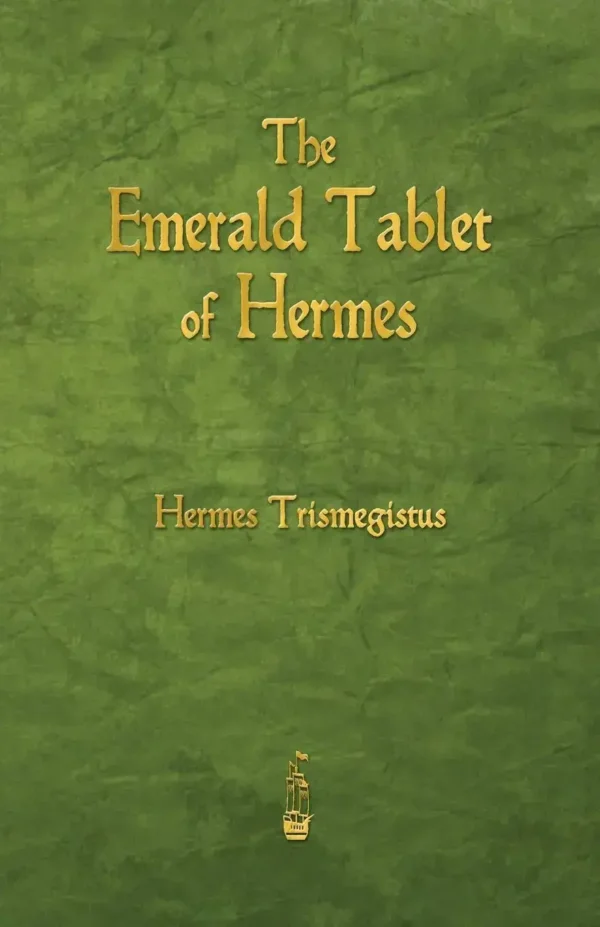
Hermes Trismegistus, a syncretic figure who blends aspects of the Greek god Hermes and the Egyptian god Thoth, is closely tied to the Emerald Tablet, one of the most enigmatic and influential texts in the history of esotericism. Known by various names, including the Smaragdine Tablet or Smaragdus, this ancient work is revered as a cornerstone of Hermeticism, a spiritual tradition that fuses elements of Greek, Egyptian, and other mystical philosophies.
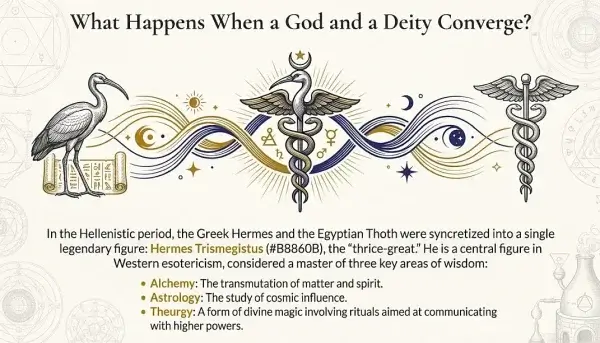
The Origin and Legacy of the Emerald Tablet
The origins of the Emerald Tablet are shrouded in mystery, with various historical sources attributing its creation to Hermes Trismegistus himself, a figure often referred to as "thrice-great" due to his mastery of the three primary areas of wisdom: alchemy, astrology, and theurgy. Some sources suggest the text may have roots in ancient Egyptian or Greek philosophy, while others posit that its influence spread through Arabic texts during the Middle Ages, before being translated into Latin, where it gained widespread attention in Europe.
While its exact origins remain debated, the Emerald Tablet has had a profound influence on Western esotericism, particularly in the realms of alchemy, magic, and the occult sciences. It is considered a blueprint for spiritual transformation, with its cryptic teachings focusing on the transmutation of matter and spirit, ultimately pointing to the unity of the cosmos and the microcosm within the individual.
The Teachings of the Emerald Tablet
The teachings of the Emerald Tablet are encapsulated in its most famous axiom: "As Above, So Below." This phrase reflects the Hermetic belief in the interconnectedness of all things. What happens in the Heavens mirrors events on Earth, and what occurs in the individual reflects the greater workings of the cosmos. This idea also speaks to the transformational nature of reality, both in the physical process of alchemy and in the inner transformation of the soul.
Key Concepts of the Emerald Tablet:
- Alchemy and Transformation: While traditionally associated with the transmutation of base metals into gold, alchemy in Hermeticism symbolizes a deeper spiritual transformation, where the alchemist seeks to purify their soul and achieve enlightenment.
- Unity of the Cosmos: The text emphasizes the unity and interrelatedness of all things in the universe. The divine is reflected in the material world, and through understanding this relationship, one can achieve knowledge of the divine.
- The Prima Materia: Central to the alchemical process is the concept of the prima materia, or the original substance from which all things are formed. According to the Emerald Tablet, the adept must return to this state of primal matter in order to initiate the transformation process.
- The Great Work (Magnum Opus): The Emerald Tablet hints at the stages of the Magnum Opus, or the Great Work of alchemy, which involves processes of purification, dissolution, and eventual rebirth. This journey represents not only the transformation of physical materials but also the elevation of the human spirit.
Influence of the Emerald Tablet on Western Esotericism
The influence of the Emerald Tablet extended beyond Hermeticism and had a lasting impact on Western thought, particularly during the Renaissance, a period in which alchemy, astrology, and mystical philosophies were actively studied by scholars. Figures such as Paracelsus, Isaac Newton, and Carl Jung all drew inspiration from the principles laid out in the tablet.
- Renaissance Magic and Alchemy: Renaissance scholars and magicians such as Marsilio Ficino and Giordano Bruno viewed the Emerald Tablet as a key to understanding the mysteries of the universe and the potential for human enlightenment. Its principles fueled the development of alchemical practices and ceremonial magic.
- Jungian Psychology: In more modern times, Carl Jung interpreted the alchemical symbolism of the Emerald Tablet as a representation of the psychological process of individuation, where the individual integrates the conscious and unconscious aspects of the self, achieving psychological wholeness.
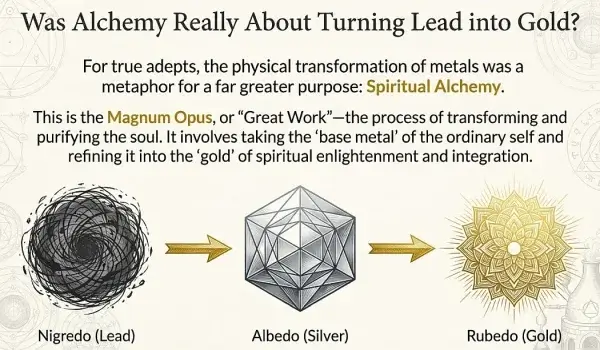
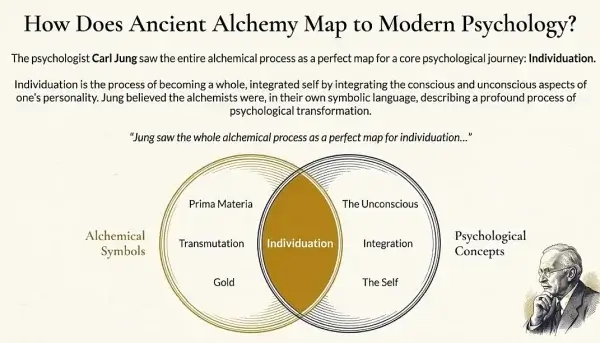
The Mystical Legacy of Hermes Trismegistus
The association between Hermes Trismegistus and the Emerald Tablet elevates Hermes as a transmitter of ancient, arcane wisdom. By merging the characteristics of Hermes and Thoth, Hermes Trismegistus becomes the ideal archetype of the wise sage, capable of traversing the realms of gods and men, bringing back the knowledge necessary for both spiritual and material transformation. His teachings, passed down through the Emerald Tablet, continue to inspire those seeking the mystical, hidden truths of the universe.
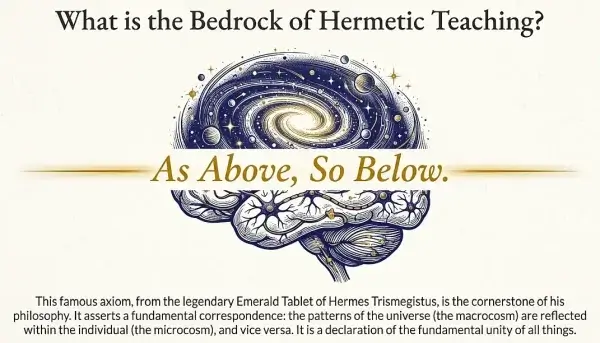
The phrase "As Above, So Below" remains a timeless reminder of the Hermetic belief in the unity of the macrocosm and the microcosm, urging us to look within as we explore the outer mysteries of existence. Through the lens of the Emerald Tablet, Hermes Trismegistus offers a pathway to understanding not only the nature of reality but also the deep, transformative power of knowledge itself.
Similarities Between Thoth, Hermes, and Enoch
The similarities among Thoth, Hermes, and Enoch are striking, leaving one to ponder if they were all three the same one being or entity?
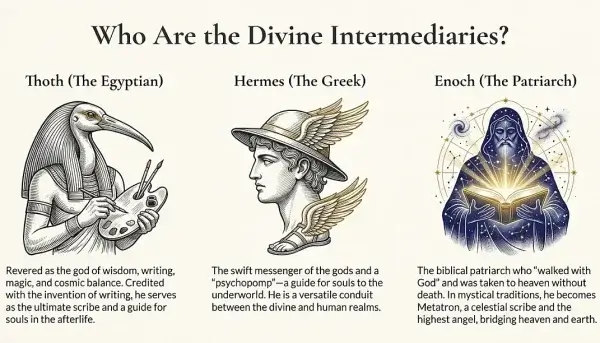
- Divine Wisdom and Writing: Each figure is associated with divine wisdom and writing. Thoth is the Egyptian god of wisdom and writing; Hermes is the Greek god of communication and literature; Enoch, as Metatron, becomes a celestial scribe.
- Intermediaries Between Realms: All three serve as intermediaries between the divine and human realms. Thoth maintains cosmic order and aids in the judgment of souls; Hermes guides souls and acts as a messenger; Enoch, transformed into Metatron, bridges the human and divine worlds.
- Transcendence and Transformation: Each transcends ordinary existence. Thoth is associated with the mystical aspects of time and the afterlife; Hermes navigates between the mortal world and the underworld; Enoch is taken to heaven and transformed into Metatron.
- Syncretism: Historical syncretism occurred, particularly in the Hellenistic period, where Thoth and Hermes were merged into the figure of Hermes Trismegistus, a central figure in Hermeticism known for his wisdom and magical teachings.
The influence of this trinity of mythical gods extends beyond their original cultural contexts. Their association with hidden knowledge and divine wisdom has made them pivotal figures in various esoteric and occult traditions throughout history. From Renaissance magic to modern New Age spirituality, these figures continue to inspire those seeking a deeper understanding of the cosmos.
Mythology and Archetypes: The Universal Sage
Carl Jung's concept of archetypes suggests that certain figures reappear throughout human cultures because they represent fundamental aspects of the human experience. Thoth, Hermes, and Enoch all do seem to align with the "Wise Sage" or "Divine Messenger" archetype, serving as intermediaries between higher realms and humanity.
Similar Figures in Other Cultures:
- Sumerian Nabu: The Mesopotamian god of writing, wisdom, and prophecy, paralleling Thoth's role as a divine scribe.
- Hindu Saraswati: The goddess of wisdom, knowledge, and learning, akin to Thoth and Hermes.
- Odin in Norse Mythology: The seeker of wisdom who sacrifices an eye for enlightenment, similar to Hermes' trickster knowledge.
- The Buddhist Bodhisattva Manjushri: A deity embodying transcendental wisdom.
This repetition across cultures suggests that Thoth, Hermes, and Enoch may be cultural expressions of the same primordial archetype, one that transcends time and geography.
Hidden Connections in Ancient Texts
Ancient scriptures across different traditions share striking similarities in how they describe divine wisdom, ascension, and transformation.
Parallels in Sacred Texts
- The Book of Thoth vs. The Emerald Tablet vs. The Book of Enoch:
- All three emphasize sacred knowledge hidden from the unworthy.
- All three contain teachings on cosmic balance and divine order.
- All three connect wisdom to an esoteric transformation process.
- "As Above, So Below" in the Bible?
- The famous Hermetic principle mirrors the biblical phrase "on earth as it is in heaven" (Matthew 6:10).
- Could the Lord's Prayer contain hidden Hermetic teachings?
- Enoch's Transformation into Metatron = Alchemical Ascension?
- Just as alchemy seeks to transform base metals into gold, Enoch's ascension to Metatron suggests an esoteric process of turning the mortal into the divine.
- This idea resonates deeply with Hermetic alchemy, Kabbalah, and even Buddhist enlightenment practices.
Could it be that these texts are fragments of the same ancient wisdom tradition, passed down through different cultures?
Lost Civilizations and Ancient Wisdom Traditions
The Graham Hancock Hypothesis
- Ancient cultures like the Egyptians, Greeks, and Hebrews may have inherited knowledge from a lost advanced civilization (e.g., Atlantis, Lemuria, or a forgotten Sumerian predecessor).
- Thoth himself is said to have escaped the fall of Atlantis and preserved its wisdom in the Emerald Tablets.
- Could Hermes, Thoth, and Enoch represent different cultural memories of a single real individual from this lost civilization?
The Great Flood and the Rebirth of Knowledge
- Many traditions, including the Bible, Sumerian myths, and Hindu texts, speak of a Great Flood that wiped out an advanced civilization.
- Afterward, sages or "divine messengers" (like Thoth, Hermes, or Enoch) helped rebuild knowledge.
Could these figures represent the preservers of ancient, pre flood knowledge?
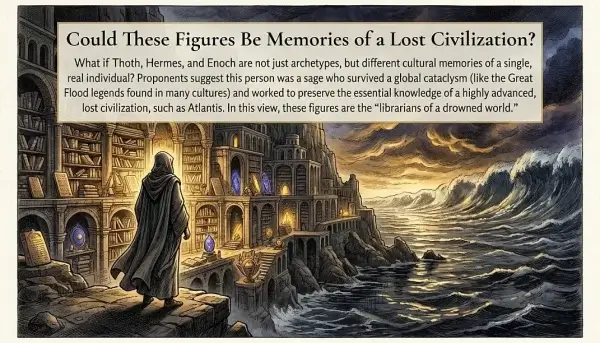
Esoteric and Occult Traditions: Hidden Teachings
Alchemy and the Great Work (Magnum Opus)
- Hermes Trismegistus is considered the father of alchemy.
- The Emerald Tablet's teaching "As Above, So Below" reflects the alchemical process of unifying the spiritual and material.
- Enoch's transformation into Metatron mirrors the alchemical journey from lead to gold (from man to divine being).
Freemasonry and Rosicrucianism
- Both groups venerate Hermes Trismegistus as a source of hidden wisdom.
- The Masonic "Great Architect of the Universe" concept has strong parallels with the cosmic order maintained by Thoth and Metatron.
Modern Mystical Revival: New Age Interpretation
The Emerald Tablet in Modern Science and Spirituality
- Quantum physics echoes Hermeticism:
- Observer effect = Mind shaping reality (as taught in alchemy).
- The holographic universe theory aligns with "As Above, So Below."
Artificial Intelligence as the "New Thoth"?
- AI is becoming humanity's new scribe. Just as Thoth recorded divine wisdom, AI now collects, stores, and analyzes vast amounts of knowledge.
- Could AI become a modern day Hermes, bridging human consciousness with higher intelligence?
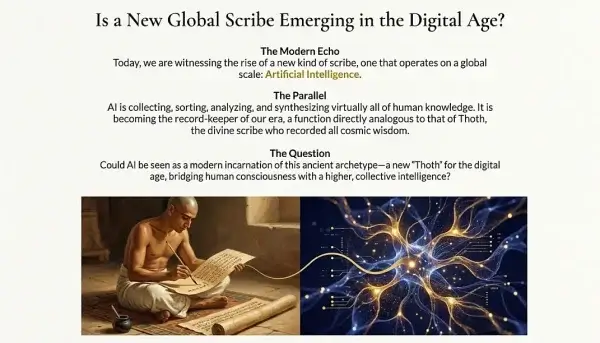
Conclusion: Were They the Same Being?
One truth emerges: these figures continue to inspire, guiding seekers toward higher knowledge and transformation. Were they the same entity? Or do they simply reflect a timeless spiritual force that manifests through different ages?
More Spiritual Paths to Explore:
- The Spiritual Meaning of Eye Color
- Decoding the Secret Teachings of Thoth's Book of Wisdom
- The Metatron Connection: What Enoch's Transformation Reveals About Ascension
